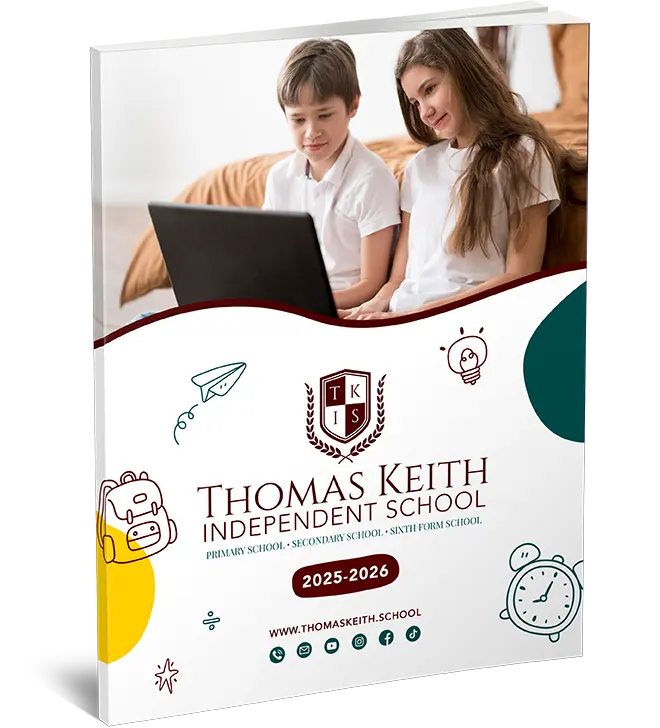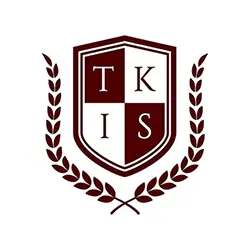Introduction Adjectives For KS1
Children can better depict the world around them when they comprehend the power of adjectives in early education. Words that provide information about size, colour, shape, and other characteristics of nouns are called adjectives. For pupils in Key Stage 1 (KS1), learning adjectives is crucial to expanding their vocabulary, strengthening their ability to construct sentences, and developing their creative writing abilities. This guide will explore the function of adjectives in KS1, offer exercises and examples, and present cutting-edge teaching strategies, such as those employed at Thomas Keith Online Independent School, to enhance student engagement and learning outcomes.
What Are Adjectives?
Adjectives provide readers with additional context and information by describing something or someone. Simple introductions to adjectives are made in KS1, with an emphasis on common, everyday words that kids can use to describe their experiences, people, and environment.
Examples of KS1 Basic Adjectives
Colors: blue, green, and red
Size: large, little, and small
Form: long, square, or round
Emotions: Joy, sorrow, pleasure
Smooth, rough, and bumpy textures
Adjectives can be used in statements like “I have a red apple” or “The big dog is running” to get kids started.
The Value of Adjectives in KS1 Instruction
Students in KS1 can use adjectives to enhance information and express themselves creatively. Comprehending adjectives benefits kids:
Develop a Descriptive Vocabulary: Children who learn adjectives are able to describe the world in greater detail because their linguistic skills are expanded.
Improve Sentence Structure: Adding adjectives to sentences gives them depth and makes descriptions or stories more engaging.
Foster Emotional Expression: Youngsters can better communicate their emotions by using words like “happy,” “sad,” and “excited.”
Facilitating Oral Communication: In addition to writing, adjectives are essential for effective oral communication. When speaking, children need to describe people, places, and things with enough detail to engage their listeners. KS1 instruction encourages the use of adjectives to provide context, evoke emotion, or clarify ideas. For instance, a student might say, “The sky is bright and clear,” to give a more vivid description compared to simply stating, “The sky is blue.” This helps children communicate more effectively, whether in a conversation, a presentation, or storytelling.
Enhancing Creative Writing : KS1 students begin experimenting with writing at this stage, and adjectives are fundamental in helping them express their ideas in a more interesting and imaginative way.Whether writing about their favourite animal or describing a fantastical setting, adjectives allow students to bring their creative ideas to life. For example, instead of writing “I saw a tree,” a KS1 student might write “I saw a tall, green tree with colourful flowers.” This not only makes their writing more engaging but also encourages them to think critically about the words they use.
The value of adjectives in KS1 instruction cannot be overstated. They are key tools in helping students build a strong foundation in language, enabling them to communicate more effectively, comprehend texts better, and express themselves creatively. By incorporating adjectives into everyday learning, teachers provide students with the skills necessary to develop rich, descriptive language that will serve them throughout their education and beyond. Through the careful and purposeful introduction of adjectives, children gain confidence in their ability to describe the world around them, leading to improved literacy and communication skills.


KS1 Classroom Adjective Instruction
Adjectives are successfully taught by teachers in KS1 classes using a variety of interactive techniques. Here are a few common strategies:
- Visual Learning with Pictures and Flashcards
Children can be effectively taught to associate adjectives with actual objects by using picture books or flashcards. Children can learn to visually associate size with words by, for instance, being shown a picture of a “big” bear or a “small” mouse.
- Interactive Narration
It can be enjoyable to learn adjectives through storytelling sessions that highlight adjectives. Richly described stories help kids learn how adjectives make characters and places come to life.
- Games and Activities using Adjectives
Adjective Scavenger Hunt: In this game, kids search for items that fit the following adjectives: “soft,” “hard,” “smooth,” etc.
Children should work in pairs to characterize their classmates using words like “funny,” “kind,” and “playful.”
A Case Study of Technology Integration: Thomas Keith Online Independent School
Adjectives are taught at Thomas Keith Online Independent School in a novel way by fusing conventional teaching techniques with digital learning resources. The interactive adjective exercises, digital flashcards, and virtual storytelling sessions offered by this online school keep students interested while enhancing their language and vocabulary. Thomas Keith Online Independent School takes the following stance on adjectives:
Students can match adjectives to pictures using virtual flashcards and interactive games, which adds dynamism and interaction to the learning process.
Live Virtual Story Sessions: Thomas Keith teachers highlight adjectives and help kids comprehend the power of descriptive language by using virtual storytelling sessions.
Customized Learning: The school analyzes each student’s proficiency level and adapts the lessons to fit their own learning preferences using a personalized approach.
Exercises and Illustrations for Adjective Practice at Home
Using these easy yet powerful adjective exercises, parents can help their kids learn at home:
- The Sorting Game of Adjectives
Encourage kids to classify different home things according to adjectives by gathering them together. For instance, people would classify objects as “soft,” “hard,” or “heavy.”
- Explain the Activities of the Day
Children should be asked to use words like “fun,” “exciting,” or “boring” to characterize their day at the end of each day. While practicing adjectives, this exercise encourages kids to think back on their experiences.
- Nature Walk with Explanations
During a nature walk, ask kids to use adjectives to describe what they see. They might notice a “bright” flower, a “small” insect, or a “tall” tree, for instance.

Advice for Effective Adjective Use in Writing
Motivate first-graders to:
In their stories, use adjectives to describe the characters and situations.
Incorporate sensory descriptors such as “rough,” “soft,” or “shiny” to evoke strong physical sensations.
Examine how various adjectives alter a sentence’s meaning by experimenting with them.
In conclusion,
In KS1, mastering adjectives is an essential stage that lays the groundwork for descriptive language and artistic expression. Kids can learn how to use adjectives in their writing and speaking by using fun techniques like games, storytelling, and internet resources. Adjectives can be included into everyday instruction to help students build a strong vocabulary that will benefit them throughout their academic careers.
FAQs
Q1. What makes adjectives crucial for KS1 pupils?
With the use of adjectives, young students can better convey their thoughts and feelings by adding detail to their sentences.
Q2. How may parents demonstrate adjective usage in the home?
Parents should encourage daily descriptions, utilize storybooks that emphasize descriptive language, and play games like adjective scavenger hunts.
Q3. How effective is the strategy used by Thomas Keith Online Independent School?
Thomas Keith ensures individualized help for every student by fusing digital resources with traditional teaching approaches to make learning adjectives interesting and approachable.
Q4. In KS1, which adjectives are frequently used?
Sizes (large, tiny), forms (round, square), colors (red, blue), and emotions (happy, sad) are examples of common adjectives.
Q5. In what ways do adjectives enhance creative writing?
Characters, situations, and events are given additional detail by adjectives, which improves creative writing and makes stories more engaging.
Q6. What are adjectives in simple terms?
Adjectives are words that describe nouns. They tell us more about a person, place, or thing, such as how it looks, feels, or sounds.
Q7. Can you give examples of adjectives for KS1 students?
Some examples are “big,” “small,” “happy,” “sad,” “colourful,” and “soft.”
Q8. Why are adjectives important for writing?
Adjectives make writing more interesting by giving more detail about the things or people in the story.
Q9. How do you use adjectives in a sentence?
Adjectives are placed before the noun they describe, like “a tall tree” or “a cute puppy.”
Q10. Can adjectives describe feelings?
Yes! Adjectives like “excited,” “scared,” “angry,” and “joyful” can describe how someone feels.
Q11. Can adjectives describe size and shape?
Definitely! Adjectives like “tiny,” “round,” and “wide” tell us about size and shape.
Q12. What is the difference between an adjective and a noun?
A noun is a person, place, or thing, while an adjective describes or gives more information about the noun.
Q13. Can adjectives be used with more than one noun?
Yes, adjectives can describe more than one noun, like “big and small houses” or “blue and yellow flowers.”
Q14. How can we make adjectives more interesting?
We can use different types of adjectives like “strong,” “mighty,” or “delicious” to make descriptions more fun and exciting.
Q15. Can adjectives be used to compare things?
Yes, adjectives can be used for comparisons, like “bigger,” “smaller,” “more beautiful,” or “the fastest.”
Q16. How can adjectives help us in stories?
They help readers imagine what things look like and understand emotions or settings better.
This outline is a well-organized, educational piece on teaching adjectives to KS1 children that makes use of interesting methods and examples. The Thomas Keith Online Independent School serves as an example of how digital resources can enhance conventional teaching strategies.



